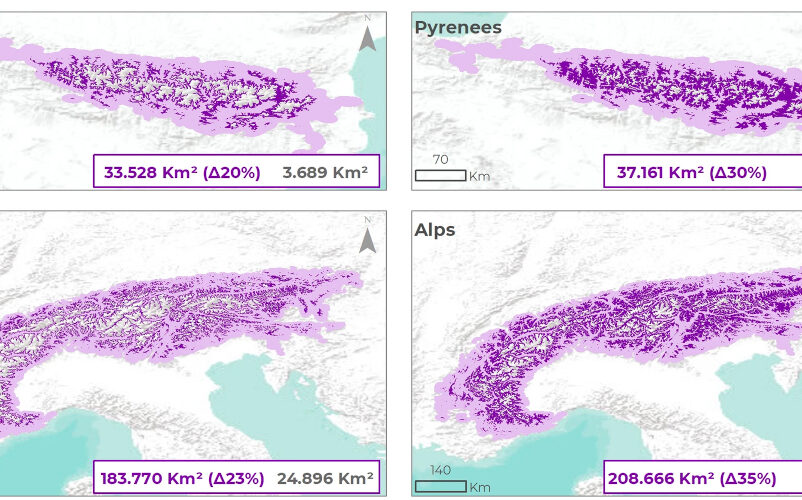A study by JRU CTFC-Agrotecnio-CERCA, UdL and UNIZAR detects the same pattern in four European mountain ranges.
Global warming will remove growth limitations for trees in mountain forest ecosystems in the main European mountain ranges: the Pyrenees, the Alps, the Carpathians, and the Caucasus. The trees will be taller and will be able to grow at higher altitudes. This is, according to a paper by the Joint Research Unit CTFC-Agrotecnio-CERCA, University of Lleida (UdL) and the University of Zaragoza (UNIZAR) published in the journal Communications Earth & Environment, of the Nature group. The study reveals a constant pattern throughout the old continent where there is a sudden decrease in the height of the trees from a certain height, coinciding with the beginning of unfavorable conditions for vegetative growth. These are data to be taken into account in forest management, since increasing the biomass also increases the risk of fire.
“Currently in the Pyrenees, from 1,500 meters altitude trees begin to be less tall, until there comes a point at which they are no longer found,” explains Pere Joan Gelabert, professor at the University of Lleida and researcher at the JRU CTFC-Agrotecnio. “With global warming, this point where limitation begins will change,” he adds.
The team used data from the Global Ecosystem Dynamics Investigation (GEDI), a NASA mission to measure global tree height, to assess the future distribution of growth limitation under two possible climate change scenarios, one more conservative and one more pessimistic. In both cases, the results predict variations in tree thresholds, i.e. the maximum altitude at which trees grow. The altitude threshold will rise between 2080 and 2100.
The research results predict that this significant upward shift of the threshold will potentially increase the unconstrained area of tree growth. Specifically, the most conservative forecasts place the increase between 60% and 65% and the most pessimistic forecasts between 70% and 100%. The only area outside the general trend would be the Carpathian Mountains, where the estimated threshold is already quite close to the current tree line.
In three of the four mountain ranges analyzed (Alps, Carpathians and Caucasus Mountains), the decrease in maximum tree height with altitude is mainly due to thermal limitations. In the Pyrenees, on the other hand, it seems to be more influenced by precipitation since the Mediterranean climate is characterized by a marked summer drought. “Even so, altitude is still a good indicator of the relationship between climate and tree height development and can be used globally,” the findings state.
Further information:
Maximum tree height in European Mountains decreases above a climate-related elevation threshold. Gelabert, P. J., Rodrigues, M., Coll, Ll., Vega-Garcia, C., Ameztegui, A. Communications Earth & Environment 2024 https://www.nature.com/articles/s43247-024-01246-5
Last modified: 2 April 2024










